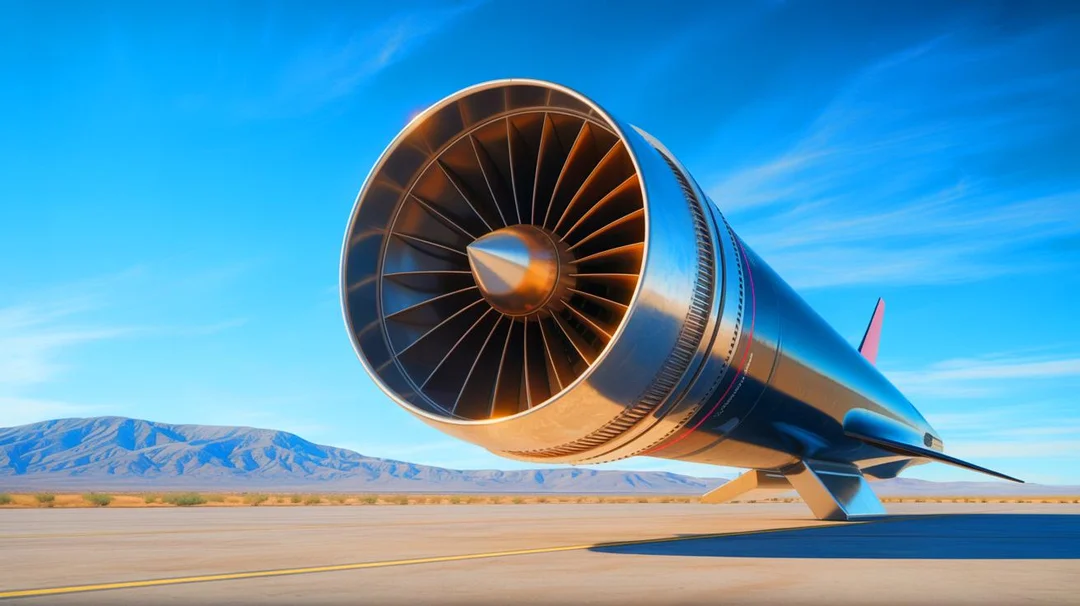
Venus Aerospace’s Hypersonic Engine Breakthrough: A New Era of High-Speed Flight?
The future of air travel may be closer than we think, thanks to a groundbreaking achievement by Venus Aerospace, a startup based in Houston, Texas. The company recently announced the successful testing of its Rotating Detonation Rocket Engine (RDRE), a technology with the potential to revolutionize hypersonic flight. This milestone marks a significant step toward realizing commercial travel at speeds four to six times the speed of sound, all from a conventional runway.
What is a Rotating Detonation Rocket Engine (RDRE)?
The RDRE has been a topic of discussion in propulsion technology since the 1980s. Unlike traditional rockets that rely on subsonic burning (deflagration), the RDRE utilizes supersonic combustion (detonation). A 2023 paper in Scientific Reports highlights the advantages: "Detonations entail compact heat release zones at elevated local pressure and temperature... producing more useful available work compared to equivalent deflagration-based devices; detonation-based combustion is poised to radically improve rocket performance... producing up to 10 % increased thrust." The engine is also expected to be smaller and lighter.
Venus Aerospace's Breakthrough
On a Wednesday at Spaceport America in New Mexico, Venus Aerospace showcased their RDRE in action. According to Sassie Duggleby, CEO and Co-founder, "We've proven that this technology works—not just in simulations or the lab, but in the air. With this milestone, we're one step closer to making high-speed flight accessible, affordable, and sustainable."
Andrew Duggleby, Co-founder and CTO, emphasized the practical implications: "Rotating detonation has been a long-sought gain in performance... We've built an engine that not only runs, but runs reliably and efficiently—and that's what makes it scalable." This initial test focused on validating the system's functionality rather than achieving a specific speed record.
Implications for the Future of Travel
The successful RDRE test holds promise for creating faster and more efficient aircraft. Venus Aerospace is now gearing up for a full-scale propulsion test aiming to develop the Stargazer M4, a Mach 4 reusable passenger aircraft. This could dramatically reduce travel times, potentially shrinking a Los Angeles to Tokyo flight to under two hours, thereby transforming global connectivity.
Beyond Venus Aerospace: A Hypersonic Race
Venus Aerospace isn't alone in the pursuit of hypersonic technology. Several other US startups are actively developing cutting-edge solutions, including:
- Anduril Industries: Focusing on hypersonic solid rocket motors for enhanced missile capabilities.
- Hermeus: Working on the Quarterhorse aircraft (Mach 5) and the ambitious Halcyon project, aiming for a London to New York flight in 90 minutes.
- Castelion and Ursa Major: Contributing to the defense sector with affordable hypersonic weapons and engines.
The Pentagon has also contracted Kratos Defense & Security Solutions to develop hypersonic testing, showcasing a strong US commitment to this technology.
The Path Ahead
While challenges remain, the progress in hypersonic technology is undeniable. Venus Aerospace's RDRE achievement, along with parallel developments by other startups, paves the way for a potential revolution in both military and commercial aviation. The vision of intercontinental travel in a matter of hours is edging closer to reality thanks to these important technical advancements.
What are your thoughts on the future of hypersonic travel? Leave your comments below and share this article to join the discussion!